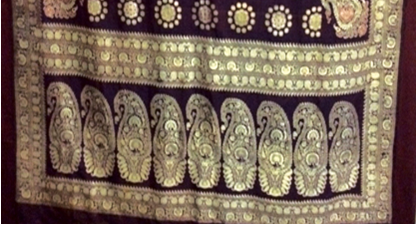
Art history/ Historiography, Crafts, Handlooms, Art
The Weaving and Dress of the Rabari of Kutch
Edwards, Eiluned
April, 2019
Abstract
The Rabari are pastoral nomads who inhabit the desert tract of Kachchh district in the extreme west of Gujarat, where India borders Pakistan. They are renowned throughout northwest India for their textiles and dress, which are distinguished by elaborate bas-reliefs of dense hand embroidery.
Since Independence in 1947, there has been widespread socio-economic change in India, the impact of which has resulted in dramatic alterations to the rural way of life and, among Rabaris, to an emerging pattern of sedentarisation. These changes have generated ongoing discourse in the Rabari community about the nature of individual and group identity, and the continuing negotiations, in this respect, have been expressed most notably through the medium of textiles and dress.
For the most part, Rabaris are not what might be termed ‘primary’ producers of textiles. They neither spin nor weave nor make felt but Rabari women are recognised for their consummate skill as embroiderers, and embroidery as a particular expression of the material culture of the Rabari of Kachchh is highly regarded. Largely produced for a woman’s trousseau, it has been transformed from an item of dowry and a ‘labour of love’, to a saleable product and a form of labour-work, mostly through the agency of outsiders. Rabaris have radically reappraised its function, previously an integral part of caste dress, in the last five years, and strategies to rationalise the financial burden of dowry and to realise the commercial potential of embroidery are being implemented. These measures have evolved for...
This is a preview. To access all the essays on the Global InCH Journal a modest subscription cost is being levied to cover costs of hosting, editing, peer reviewing etc. To subscribe, Click Here.



